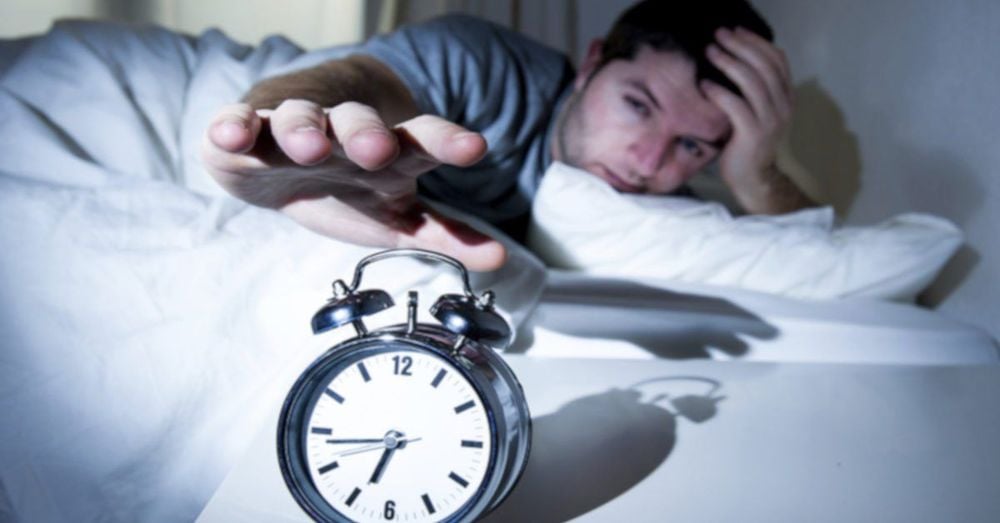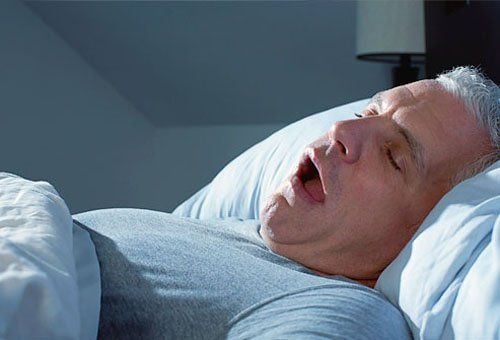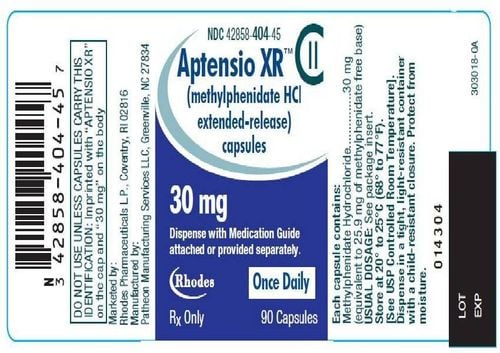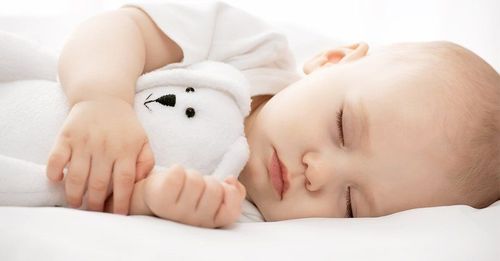This is an automatically translated article.
Sleep disturbances involve problems with the quality, duration and quantity of sleep, leading to daytime stress and impaired functioning. The article below is a visual guide to sleep disorders and how to treat them.
1. What is a sleep disorder?
Sleep-wake disorder often occurs in conjunction with other medical or mental health conditions, such as depression, anxiety, or cognitive dysfunction. There are several different types of sleep-wake disorders, with insomnia being the most common. Other sleep-wake disorders include obstructive sleep apnea, narcolepsy, and restless legs syndrome.
Difficulty sleeping is linked to both physical and emotional problems. Sleep problems can contribute to or worsen mental health conditions and can also represent other mental health conditions.
About one-third of adults report symptoms of insomnia and 6-10 percent meet the criteria for an insomnia disorder.
* Factors that cause sleep disorders:
There are many different factors that cause sleep disorders. Typical of which are eight factors including:
Physical (such as ulcers). Medical condition (eg, asthma, COPD) Psychiatric (eg, depression, anxiety disorder). Environment (such as alcohol). Working long night shifts (this schedule disturbs the “circadian clock”) Genetic factors (narcolepsy is hereditary). Medications (some can cause insomnia). Aging (approximately half of adults over 65 years of age, according to research, have some type of sleep disorder. It is not clear whether this is due to the aging process or the result of medications commonly used by older adults. use).

Rối loạn giấc ngủ là chứng bệnh thường gặp ở mọi lứa tuổi, giới tính do nhiều yếu tố khác nhau
2. A Visual Guide to Infant Sleep Disorders
2.1. Common Sleep Disorders in Children A 2014 study estimated that up to 50% of children will have a sleep disorder. According to this study, common types of sleep disorders include:
Obstructive sleep apnea (1 to 5%) Sleepwalking (17%) Arousal disorder (17.3% in children under 13) age and 2.9 to 4.2% in adolescents 15 years of age and older) Sleep terrors (1 to 6.5%) Nightmares (10 to 50% in children 3 to 5 years of age) Insomnia temporal behavior childhood (10 to 30%) Late sleep phase disorder (specifically 7 to 16% in adolescents) Restless legs syndrome (2%) 2.2. Causes of Sleep Disruption in Babies At most stages of development, changes in a child's body and mind can make it difficult for them to fall asleep or stay asleep.
Your baby may feel separation anxiety and want to be cuddled in the middle of the night. They may be learning words and waking up with their minds racing to say the names of everything in the crib. Even their need to stretch their arms and legs can keep them awake at night.
Other sleep disruptions may be due to a particularly exciting or tiring day leaving your child tossing and turning to get a good night's sleep. Foods and drinks with caffeine can make it difficult or impossible for your child to fall asleep.
New surroundings or significant changes to routine can also be disruptive.
Or it could be due to:
Child is sick Child has allergies 2.3. Signs of Sleep Disorders in Babies Sometimes it can take a little while for your baby to settle down before bedtime, but if your baby seems to be having a lot of trouble, chances are your baby is having a hard time. Must have a sleep disorder. Some typical symptoms are:
Your child is lying in bed, reading a book, listening to music, watching a movie or going to the bathroom for a period of time that can last for hours. Your child only sleeps for about 90 minutes at a time, including at night. Your child says they have itchy feet at night. Your child snores loudly. Many children sometimes have restless nights or don't get a good night's sleep. If these behaviors continue for several nights, it could signal an underlying cause. During the day, sleep-deprived children can also:
appear more erratic and irritable Act in a more disruptive way Not performing at their normal level at school

Trẻ sơ sinh bị rối loạn giấc ngủ do nhiều nguyên nhân khác nhau các mẹ cần chú ý
2.4. How much sleep is enough for children? Most babies sleep a total of 16 to 17 hours a day under 3 months of age and start sleeping through the night between 3 and 12 months of age. However, not all children are the same. 0 - 3 months For your baby, sleep is absolutely essential for growth and development. Children at this age have short naps of only 2-3 hours, they will wake up again to eat, play or have other activities. 3 - 12 months At 6 months, babies can sleep through the night and stay awake longer during the day. As babies near their first birthday, they're more likely to sleep consistently at night with a nap or two during the day. More than 1 year When toddlers, they will sleep longer. Gradually entering the orbit, the sleep division is clear, in the afternoon will sleep for a long time or for two short naps.
2.5. Newborn Sleep Disorders * Sleep Apnea
Sleep apnea is really scary because your baby often stops breathing for 10 seconds or more while asleep. In most cases, the child will not realize this is happening.
You may also notice your child snoring loudly, sleeping with his mouth open, and excessive daytime sleepiness. If you notice these signs happening to your child, see your doctor as soon as possible.
Sleep apnea can lead to learning and behavioral problems, even heart diseases. So when you notice any unusual signs in your child again and again, you should intervene by taking your child for a checkup.
* Restless Legs Syndrome
RLS is thought to be an adult problem, but research indicates it sometimes begins in childhood, according to the Restless Legs Syndrome Foundation.
Your child may complain of fidgeting or the feeling of having bugs crawling on them and they may change positions in bed frequently to find more comfort. Some kids don't really notice they're upset, but they actually have poor sleep due to RLS.
There are several treatments for RLS, many of which have not been well studied in children. In adults, these include vitamin supplements and medications. Talk to your child's doctor to make the best choice.
* Night terrors
Night terrors are more than just a nightmare, and they can make everyone in the family nervous
More common in children than in adults, night terrors causes a child to wake up suddenly from sleep, appear frightened or intensely agitated, and often cry, scream, or sometimes sleepwalk. Usually they're not really awake and most kids don't even remember the episode.
Most of the time, night terrors occur during non-REM sleep - about 90 minutes after the child goes to bed. There is no cure for night terrors, but you can help reduce the chances of them occurring by sticking to a sleep schedule and keeping your night terrors to a minimum.
2.6. Tips to improve children's sleep Promote relaxation. Before going to bed, consider giving your child a warm bath or reading a book in silence. Keep bedroom lights dim. When going to bed, make sure the room is dark and at a comfortable temperature. Set a routine. Taking the same steps every night helps your child get used to a sleep routine. For older children, ask how many books they read before bed. Emphasize time together. Take a few minutes before bed, such as during cuddle time, with your baby. Ask children about their day and encourage conversation. This type of activity can help your child feel less restless. Unplug the electronic plug. Turn the bedroom into an electronics-free zone. Start the bedtime routine early enough to keep your child away from screens at least 1 hour before the lights go out. You should make a positive association with bedtime. Instead of yelling at your child for getting up at night, consider rewarding him for getting up and going to bed at an appropriate time.

Trẻ nhỏ từ 1 đến 8 tuổi thường gặp cơn hoảng sợ ban đêm khiến trẻ bị rối loạn giấc ngủ
3. A Visual Guide to Sleep Disorders in the Elderly
3.1. Causes of sleep disturbances in adults Normal sleep can be disrupted by many factors, including:
Stress Family needs or busy schedules Hormonal influences and temperature changes body temperature (eg, during ovulation or menstruation or hot flashes and night sweats characteristic of menopause) Physical conditions such as arthritis, kidney disease, heart failure, heartburn, asthma, Parkinson's disease and hyperthyroidism Use of stimulants such as caffeine and nicotine, alcohol, and other addictive substances. Side effects of some drugs such as diuretics, anticholinergics, drugs for Parkinson's patients, adrenergic drugs... Diet, which can lower a woman's body temperature Pregnant, can lead to pain body aches, nausea, leg cramps, fetal movements and heartburn Intrinsic sleep disorders such as sleep apnea and restless legs syndrome depression, anxiety and worry Drowsiness and fatigue fatigue 3.2. Common Types of Sleep Disorders * Insomnia
This is the most common sleep disorder, defined as difficulty falling asleep or staying asleep nightly or most nights, despite adequate opportunities. to sleep. Other symptoms of insomnia include waking up too early in the morning and not being able to go back to sleep, and having a bad night's sleep. As a result of a bad night's sleep, you often feel tired and irritable the next day and find it difficult to concentrate on daily tasks. Insomnia can also be a symptom of other physical and mental conditions, such as depression, or even of another sleep disorder, such as sleep apnea. Insomnia can last a night or up to several weeks. In some people, it can be a chronic condition that lasts for months or years. Transient insomnia lasts for a short time and is described as "intermittent" as it occasionally recurs.
Chronic insomnia occurs most nights and lasts a month or more.
* Narcolepsy
Is a condition characterized by sudden episodes of daytime sleepiness. People with narcolepsy may fall asleep at inappropriate times and without warning several times a day. Often mistaken for depression, epilepsy, or a side effect of medication, narcolepsy can occur in men or women of any age, although its symptoms are often first noticed in adolescence. adolescents and young adults. There is some evidence that narcolepsy can run in families; Up to 10 percent of people with narcolepsy say they have a close relative with similar symptoms.
Other symptoms that may appear singly or in combination months or years after daytime sleepiness begins include:
Cataplexy. These sudden episodes of loss of muscle function can range from mild weakness (such as a limp in the neck or knees, sagging facial muscles, or inability to speak clearly) to complete collapse. Attacks are often triggered by sudden emotional reactions such as laughter, anger, or fear and can last from seconds to minutes. Cataplexy is seen almost exclusively in patients with narcolepsy. Incubus. These bouts, which can last from seconds to minutes, are characterized by a temporary inability to talk or move while sleeping or waking. Sleep paralysis can also occur in people without a sleep-related disorder. Hypnagogic Illusion. These vivid, often frightening, dream-like experiences occur while dozing or sleeping. Like sleep paralysis, they are common in people with narcolepsy but can also occur in people without an identified sleep disorder. The development, severity, and order of appearance of lethargy symptoms vary, and not all people with the disorder experience all four symptoms. Although excessive daytime sleepiness usually persists throughout life, sleep paralysis and hypoglycemic hallucinations may or may not be. The symptoms of narcolepsy, especially excessive daytime sleepiness and lethargy, can be a serious disruption to personal and professional life.

Tình trạng ngưng thở khi ngủ rất nguy hiểm có thể đe dọa đến tính mạng người bệnh
Sleep Apnea
Is a serious, potentially life-threatening condition that is much more common than generally thought. It is characterized by repetitive, short interruptions of airflow during sleep. Obstructive sleep apnea, the most common form of apnea, occurs when airflow is obstructed, often due to narrowing of the airways by excess tissue (usually due to obesity), enlarged tonsils, or large uvula.
If air cannot easily get in or out of your nose or mouth, it will be harder for you to breathe. The increased breathing effort causes suction in the upper part of the airway causing it to collapse further. This can lead to heavy snoring or a halted airflow, low oxygen levels and increased levels of carbon dioxide in the blood, which, in turn, can wake a person from sleep or cause arousal - a brief disturbance in the blood stream. sleep but does not last long enough to be considered awake but may contribute to sleep disruption. With each abrupt change from deep sleep to light sleep, a signal travels from the brain to the upper airway muscles to open the airway; Normal breathing returns, often accompanied by a loud snort or gasp. Frequent stimulation, although necessary for breathing to restart, prevents recovery and deep sleep. Drinking alcohol or taking sleeping pills increases the frequency and duration of pauses in breathing by calming the brain and blocking arousal. Sleep apnea occurs at any age and in both sexes but is more common in men and the condition is more common in people over the age of 40. While not everyone who snores will experience this condition, if you snore loudly and are also overweight, have high blood pressure, or have some physical abnormality in your nose, throat, or other parts of the respiratory tract. and excessive sleepiness, you may have sleep apnea. This sleep disorder also seems to run in some families, suggesting a possible genetic predisposition.
* Restless Legs Syndrome (RLS)
Is a sleep disorder characterized by uncomfortable sensations in the legs or arms, often described as crawling, crawling, tingling, pulling, or burning pain. These symptoms occur when lying down or sitting for long periods of time. RLS symptoms tend to follow a set daily cycle, with symptoms worse at night. The sensation usually occurs in the legs but can also occur in the arms, genital area, face, and trunk. One or both legs may be affected; For some people, the feeling is also felt in the arms. RLS creates an irresistible urge to move your legs when the sensation occurs, making sleep nearly impossible. If you have RLS, you may sleep best late at night or in the morning. Symptoms may improve, then worsen, and improve again for many years. Many people with RLS also have a related sleep disorder called cyclic limb movement disorder (PLMD). This disorder is characterized by jerky or flexing involuntary leg movements, which usually occur every 20 to 40 seconds during sleep. Some people experience hundreds of such movements in one night. They may wake up, doze off, or disturb their partner's sleep. The National Sleep Foundation's 2005 American Sleep Survey found that 15% of adults reported symptoms of RLS several nights a week, and 86% of them said their condition prevented them from sleeping. Symptoms can begin at any time but are more common and more severe in older people.
3.3. What should you do? For sleep apnea, a continuous positive airway pressure (CPAP) ventilator keeps your airways open so you can rest in a healthy way. Therapy: Anxiety makes insomnia worse, but cognitive-behavioral therapy can help reduce anxiety. Relaxation and biofeedback training helps calm your breathing, heart rate, muscles, and mood. Talk therapy can also help calm you down. Exercises: There are a few things you can do to get ready for bed, and regular exercise should be part of your plan. It is easier to fall asleep when your body is tired. Exercise in the late afternoon. Working up a sweat just a few hours before bed can have the opposite effect and make you less alert. Certain foods and drinks can be nightmare triggers. Avoid these foods 4-6 hours before bedtime: caffeine, including coffee, tea and soda; Heavy or spicy food; Alcohol (it helps some people fall asleep, but it can also cause them to wake up repeatedly). Try an evening snack that's starchy and easy to digest. A small bowl of cereal with milk or a mini muffin fits the bill, but eat them at least an hour before calling a day. Warm milk and chamomile tea raise your body temperature and can make you drowsy. Turn off all electronic devices around you Repeat your sleep cycle consistently Take medication as prescribed by your doctor if needed
Please dial HOTLINE for more information or register for an appointment HERE. Download MyVinmec app to make appointments faster and to manage your bookings easily.
References: webmd.com, healthline.com, healthywomen.org













